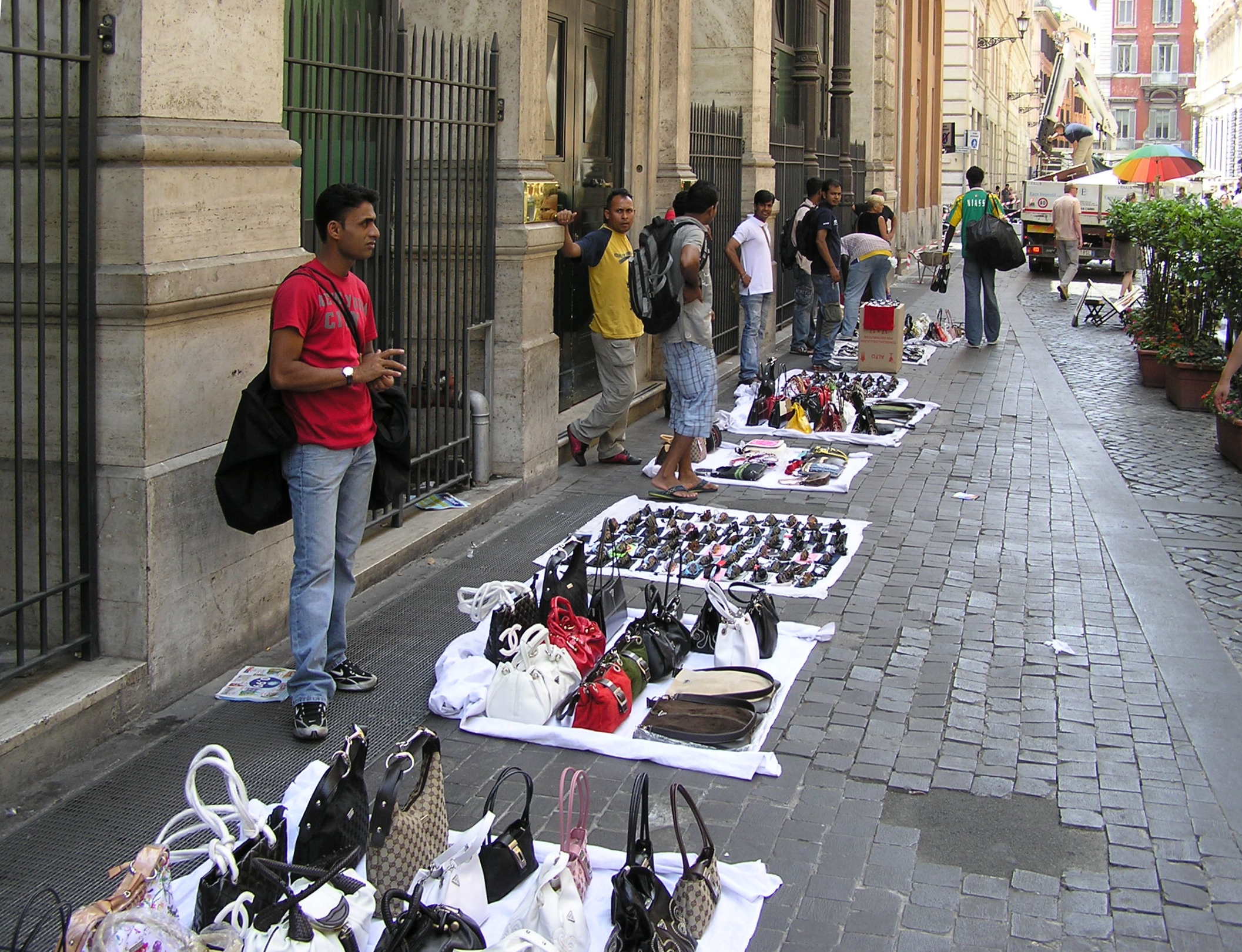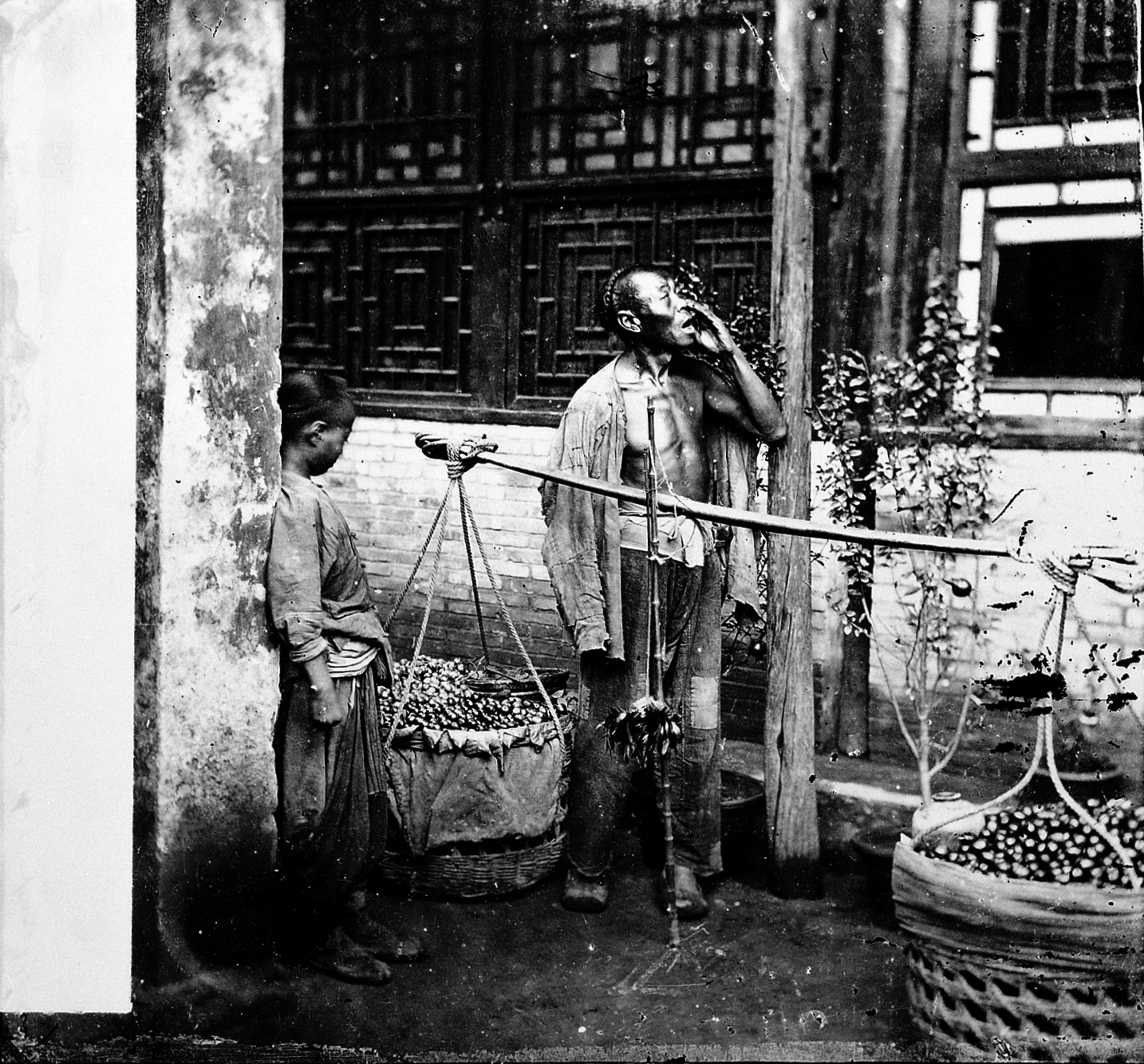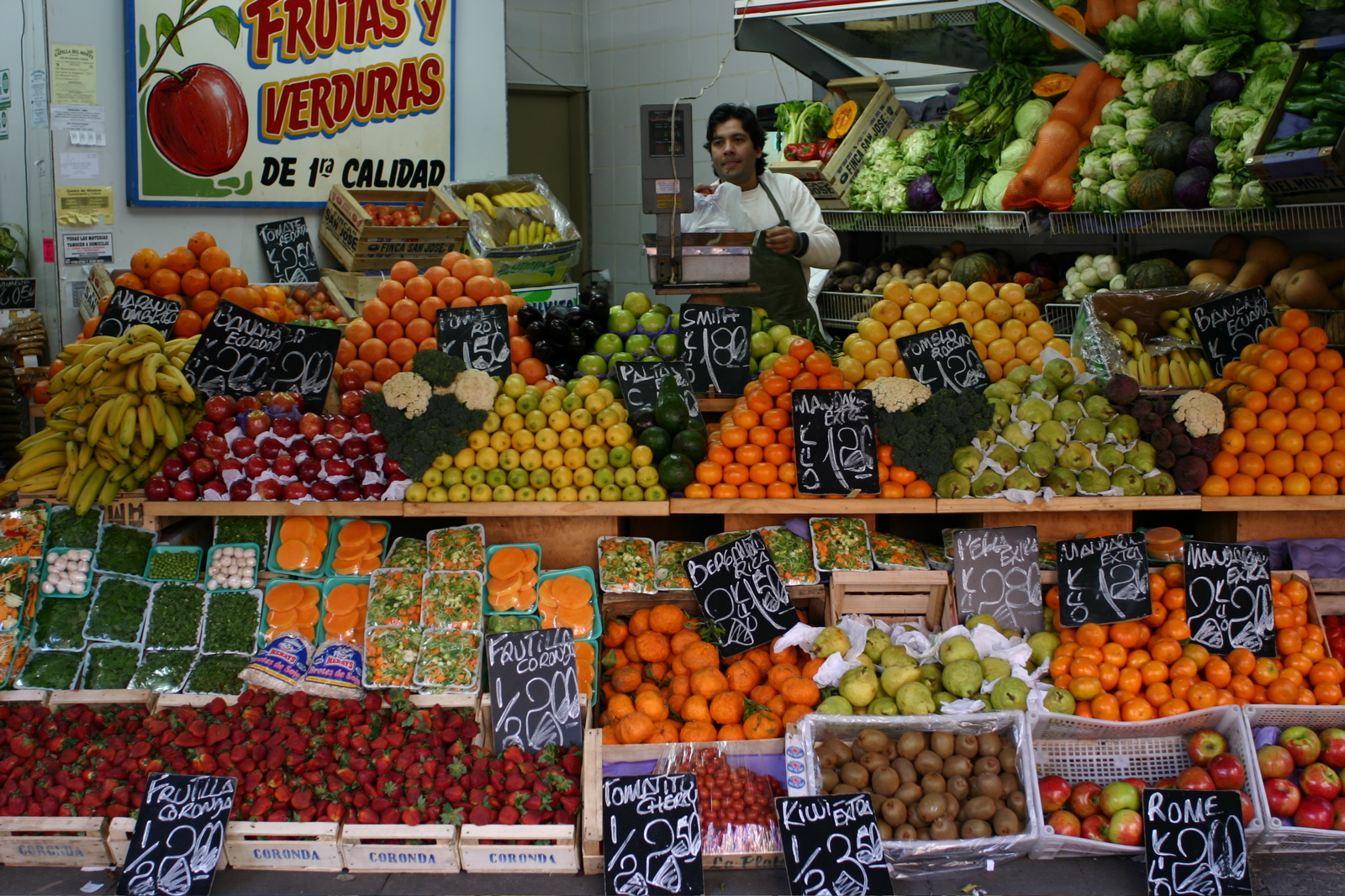|
Arabber
An arabber (or a-rabber) is a street vendor ( hawker) selling fruits and vegetables from a colorful, horse-drawn cart. Once a common sight in American East Coast cities, only a handful of arabbers still walk the streets of Baltimore. They rely on street cries to attract the attention of their customers. Arabbing The term ''arabber'' is believed to derive from the 19th century slang term " street Arabs". Arabbing began in the early 19th-century when access to ships and stables made it an accessible form of entrepreneurship. African American men entered the trade following the Civil War. Brightly painted and artfully arranged, arabber carts became a common sight on the streets of Baltimore. To alert city dwellers to their arrival, arabbers developed distinctive calls: Holler, holler, holler, till my throat get sore. If it wasn't for the pretty girls, I wouldn't have to holler no more. I say, Watermelon! Watermelon! Got 'em red to the rind, lady. During World War II, factory job ... [...More Info...] [...Related Items...] OR: [Wikipedia] [Google] [Baidu] |
Baltimore, Maryland
Baltimore ( , locally: or ) is the List of municipalities in Maryland, most populous city in the U.S. state of Maryland, fourth most populous city in the Mid-Atlantic (United States), Mid-Atlantic, and List of United States cities by population, the 30th most populous city in the United States with a population of 585,708 in 2020. Baltimore was designated an Independent city (United States), independent city by the Constitution of Maryland in 1851, and today is the most populous independent city in the United States. As of 2021, the population of the Baltimore metropolitan area was estimated to be 2,838,327, making it the List of metropolitan areas of the United States, 20th largest metropolitan area in the country. Baltimore is located about north northeast of Washington, D.C., making it a principal city in the Washington–Baltimore combined statistical area, Washington–Baltimore combined statistical area (CSA), the third-largest combined statistical area, CSA in the nat ... [...More Info...] [...Related Items...] OR: [Wikipedia] [Google] [Baidu] |
Joy Lusco
Joy Lusco, also known as Joy Kecken and Joy Lusco Kecken, is an American film and television director and writer. She often works with her husband, Scott Kecken. They worked on the HBO drama series ''The Wire (TV series), The Wire'' on four of the show's five seasons. Biography Lusco moved with her family as a teenager to the Baltimore area. In 1995, while attending Towson University, she met her future husband Scott Kecken. After graduating from college, she took an internship with the Baltimore-based television show ''Homicide: Life on the Street.'' Eventually she became a freelance writer for the show. In 1998 she wrote the teleplay for episode 6.23 "Fallen Heroes: Part 2." Later that year she wrote the teleplay for episode 7.08, "Kellerman, P.I.: Part 1." In 1997 she and Scott Kecken began work on a documentary film on Baltimore's "arabbers" (produce vendors who work from horse-drawn carts). They also started a production company called The Film Foundry. The project was funde ... [...More Info...] [...Related Items...] OR: [Wikipedia] [Google] [Baidu] |
Old Order Mennonite
Old Order Mennonites (Pennsylvania German: ) form a branch of the Mennonite tradition. Old Order are those Mennonite groups of Swiss German and south German heritage who practice a lifestyle without some elements of modern technology, who still drive a horse and buggy rather than cars, wear very conservative and modest dress plainly and who have retained the old forms of worship, baptism and communion. All Old Order Mennonites reject certain technologies (e.g., radio, television, Internet), but the extent of this rejection depends on the individual group. Old Order groups generally place great emphasis on a disciplined community instead of the individual's personal faith beliefs. The Pennsylvania German language is spoken and vigorous among all horse-and-buggy groups except the Virginia Old Order Mennonites, who lost their original language before becoming Old Order. There is no overall church or conference to unite all the different groups of Old Order Mennonites. In 2008–200 ... [...More Info...] [...Related Items...] OR: [Wikipedia] [Google] [Baidu] |
Culture Of Baltimore
The city of Baltimore, Maryland, has been a predominantly working-class town through much of its history with several surrounding affluent suburbs and, being found in a Mid-Atlantic state but south of the Mason-Dixon line, can lay claim to a blend of Northern and Southern American traditions. Food Blue crabs The most prominent example of Baltimore's distinctive flavor is the city's close association with blue crabs. This is a trait which Baltimore shares with the other coastal parts of the state of Maryland. The Chesapeake Bay for years was the East Coast's main source of blue crabs. Baltimore became an important hub of the crab industry. In Baltimore's tourist district (located between Harborplace and Fells Point), numerous restaurants serve steamed hard shell crabs, soft shell crabs, and lump backfin crabcakes. Many district shops even sell crab-related merchandise. Traditionally, crabs are steamed in rock salt and Old Bay Seasoning, a favored local spice mixture m ... [...More Info...] [...Related Items...] OR: [Wikipedia] [Google] [Baidu] |
African-American History In Baltimore
African Americans (also referred to as Black Americans and Afro-Americans) are an ethnic group consisting of Americans with partial or total ancestry from sub-Saharan Africa. The term "African American" generally denotes descendants of enslaved Africans who are from the United States. While some Black immigrants or their children may also come to identify as African-American, the majority of first generation immigrants do not, preferring to identify with their nation of origin. African Americans constitute the second largest racial group in the U.S. after White Americans, as well as the third largest ethnic group after Hispanic and Latino Americans. Most African Americans are descendants of enslaved people within the boundaries of the present United States. On average, African Americans are of West/Central African with some European descent; some also have Native American and other ancestry. According to U.S. Census Bureau data, African immigrants generally do not self-ide ... [...More Info...] [...Related Items...] OR: [Wikipedia] [Google] [Baidu] |
Street Vendors
A hawker is a vendor of merchandise that can be easily transported; the term is roughly synonymous with costermonger or peddler. In most places where the term is used, a hawker sells inexpensive goods, handicrafts, or food items. Whether stationary or mobile, hawkers often advertise by loud street cries or chants, and conduct banter with customers, to attract attention and enhance sales. Definition A hawker is a type of street vendor; “a person who travels from place-to-place selling goods.” Synonyms include huckster, peddler, chapman or in Britain, costermonger. However, hawkers are distinguished from other types of street vendors in that they are mobile. In contrast, peddlers, for example, may take up a temporary pitch in a public place. Similarly, hawkers tend to be associated with the sale of non-perishable items such as brushes and cookware while costermongers are exclusively associated with the sale of fresh produce. When accompanied by a demonstration or detailed ... [...More Info...] [...Related Items...] OR: [Wikipedia] [Google] [Baidu] |
Peddler
A peddler, in British English pedlar, also known as a chapman, packman, cheapjack, hawker, higler, huckster, (coster)monger, colporteur or solicitor, is a door-to-door and/or travelling vendor of goods. In England, the term was mostly used for travellers hawking goods in the countryside to small towns and villages. In London, more specific terms were used, such as costermonger. From antiquity, peddlers filled the gaps in the formal market economy by providing consumers with the convenience of door-to-door service. They operated alongside town markets and fairs where they often purchased surplus stocks which were subsequently resold to consumers. Peddlers were able to distribute goods to the more geographically-isolated communities such as those who lived in mountainous regions of Europe. They also called on consumers who, for whatever reason, found it difficult to attend town markets. Thus, peddlers played an important role in linking these consumers and regions to wider tr ... [...More Info...] [...Related Items...] OR: [Wikipedia] [Google] [Baidu] |
Greengrocer
A greengrocer is a person who owns or operates a shop selling primarily fruit and vegetables. The term may also be used to refer to a shop selling primarily produce. It is used predominantly in the United Kingdom and Australia. In the United States, the terms ''produce store'' or ''produce shop'' are used. By the 1940s, produce sales (measured in tonnage) made at grocery stores had surpassed those made at produce stores. While once common in the United Kingdom and Australia, the increase in popularity of supermarkets caused greengrocer shops to become rarer, though they may still be found in smaller towns and villages. Today, greengrocers can also be found in street markets, malls, and supermarket produce departments. Greengrocers' apostrophe Because of its common misuse on greengrocers' signs, an apostrophe used incorrectly to form a plural The plural (sometimes abbreviated pl., pl, or ), in many languages, is one of the values of the grammatical category of number. ... [...More Info...] [...Related Items...] OR: [Wikipedia] [Google] [Baidu] |
Costermonger
A costermonger, coster, or costard is a street seller of fruit and vegetables in British towns. The term is derived from the words ''costard'' (a medieval variety of apple) and ''monger'' (seller), and later came to be used to describe hawkers in general. Some historians have pointed out that a hierarchy existed within the costermonger class and that while costermongers sold from a handcart or animal-drawn cart, mere hawkers carried their wares in a basket. Costermongers met a need for rapid food distribution from the wholesale markets (e.g., in London: Smithfield for meat, Spitalfields for fruit and vegetables or Billingsgate for fish) by providing retail sales at locations that were convenient for the labouring classes. Costermongers used a variety of devices to transport and display produce: a cart might be stationary at a market stall; a mobile (horse-drawn or wheelbarrow) apparatus or a hand-held basket might be used for light-weight goods such as herbs and flowers. Cost ... [...More Info...] [...Related Items...] OR: [Wikipedia] [Google] [Baidu] |
Living Funeral
A living funeral, also called a pre-funeral, is a funeral held for a living person. It may be important to the person's psychological state and also that of the dying person's family to attend the living funeral. It is also sometimes used as a time to read the will and explain the reasons behind some of the decisions contained within it. Purpose A living funeral is usually done by someone who knows that they do not have much time left to live. Whether the reason is that the person is terminally ill or is at an old age, the person knows death is near and could use it as closure. It is used to celebrate the happy times, and forgive the body for "failing". Cost Money is a big part of living funerals. This is another reason that people have them. Regular funeral prices can be extremely high. Having a living funeral can save some money. Some feel that the living funeral is more meaningful. In the end, it can be around the same price for the living funeral ceremony and when the pe ... [...More Info...] [...Related Items...] OR: [Wikipedia] [Google] [Baidu] |
Ace Of Cakes
''Ace of Cakes'' is an American reality television show that aired on the Food Network. The show focused on the daily operations of Duff Goldman's custom cake shop, Charm City Cakes, in Baltimore, Maryland; including small-business ownership, working with various vendors, tasting with customers, constructing cakes, and delivering his products. Synopsis ''Ace of Cakes'' highlights the frantic activity encompassing the production of a substantial number of custom edible art cakes in a short period of time. The staff consists primarily of Duff Goldman's good friends who have varying personalities. They are frequently shown working long hours to build and decorate the cakes, yet are always making jokes to offset the alleged stress of hitting each deadline. Staff members sometimes drive the cakes to their final destinations, which can require road trips of several hundred miles. Goldman has an informal approach to running Charm City Cakes. He is known for using non-traditional cookin ... [...More Info...] [...Related Items...] OR: [Wikipedia] [Google] [Baidu] |







